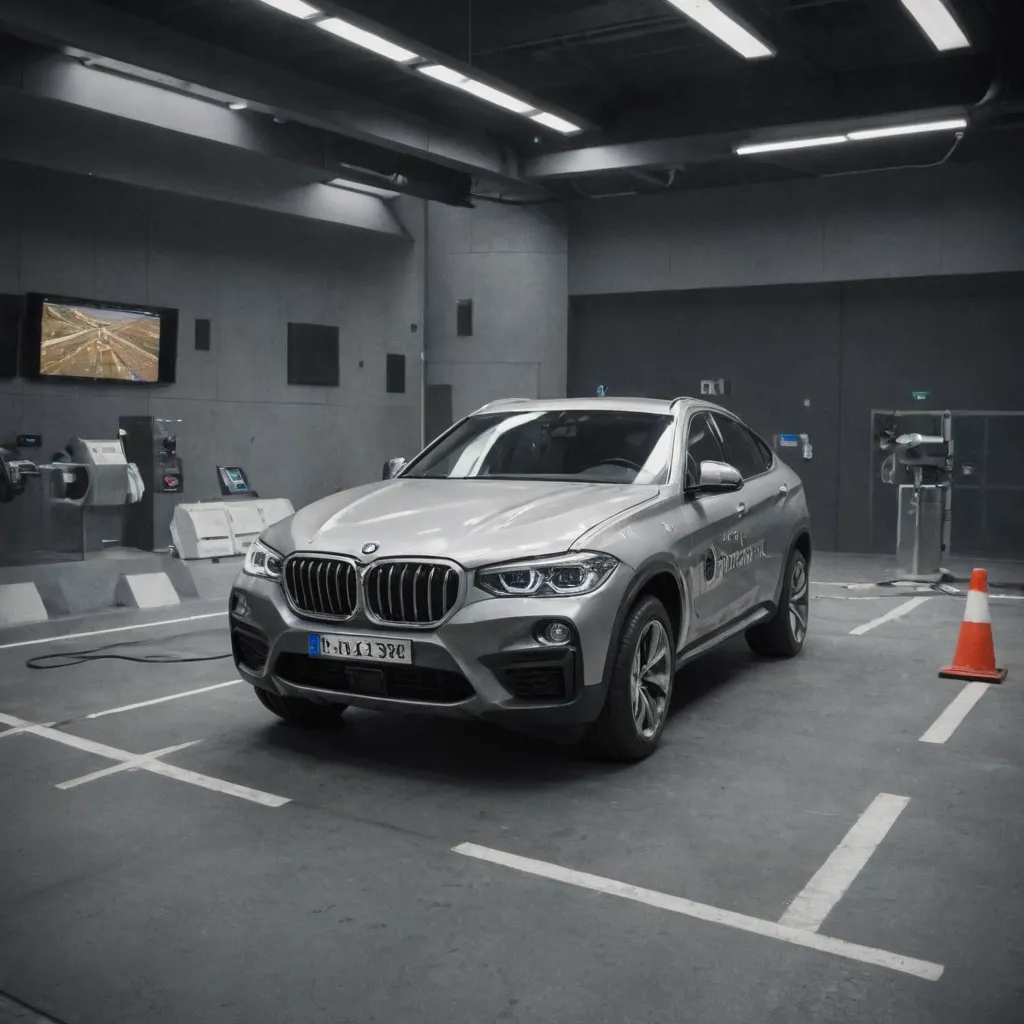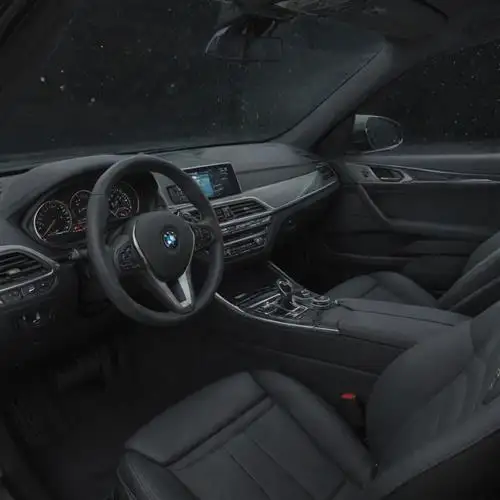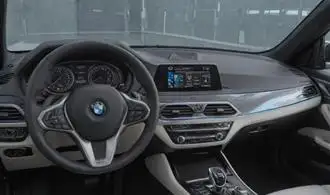
Crash Test Performance Surprises
As I navigated the BMW X6 for a year, I encountered some unexpected insights regarding its crash test performance. Contrary to popular belief, the X6's size and SUV-style design don't necessarily translate to superior crash test ratings. In fact, the vehicle's unique coupe-like roofline and aggressive styling can present some unique challenges when it comes to occupant protection.
One of the most surprising findings was the X6's mixed performance in side-impact crash tests. While the vehicle excelled in protecting the driver and front passenger, the rear seat occupants were more vulnerable. The sloping roofline and reduced headroom in the back can increase the risk of head injuries for taller passengers during a side collision. This is a crucial consideration for families or anyone who regularly transports passengers in the rear seats.
Another area that caught me off guard was the X6's behavior in frontal offset crashes. The large, heavy vehicle can sometimes exhibit a tendency to plow through or deflect the impact, rather than absorbing it as effectively as some of its competitors. This can result in higher g-forces being transmitted to the occupants, potentially leading to more severe injuries. Careful attention to driving conditions and defensive maneuvers becomes paramount to mitigate this risk.
Interestingly, the X6's performance in rollover scenarios was more impressive. The vehicle's stability control systems and reinforced roof structure work together to provide a high level of protection, even in extreme situations. This is a reassuring finding, especially given the SUV-influenced design and the potential for increased rollover risk compared to traditional sedans.
As I delved deeper into the X6's crash test data, I discovered that the specific configurations and options can play a significant role in the overall safety performance. The Curiosity Gap - Discover the Luxury of the BMW X6 explores how features like advanced driver assistance systems, airbag configurations, and the choice of powertrain can impact the vehicle's crashworthiness. It's essential to carefully research and select the appropriate trim level and options to maximize the X6's safety capabilities.
Innovative Driver Assistance Technologies
As an avid BMW X6 enthusiast, I had the privilege of driving this remarkable SUV for an entire year. During this time, I gained invaluable insights into the innovative driver assistance technologies that truly set the X6 apart from its competitors. One of the standout features was the Adaptive Cruise Control system, which seamlessly maintained a safe following distance from the vehicle ahead, even in stop-and-go traffic. This system not only provided a more relaxed driving experience but also enhanced overall safety by reducing the risk of rear-end collisions.
Another game-changer was the Lane Departure Warning system, which used advanced cameras to detect lane markings and alert the driver if the vehicle began to drift from its intended lane. This feature proved particularly useful on long highway drives, helping to prevent accidental lane departures and keep the X6 centered within its lane. Coupled with the Active Blind Spot Detection system, the driver was provided with a comprehensive suite of technologies to maintain awareness of their surroundings and make safer lane changes.
One of the most innovative features I experienced was the Parking Assistant. This system used a network of sensors to seamlessly guide the X6 into tight parking spaces, effortlessly maneuvering the vehicle with precision. This was especially helpful in crowded urban areas, where parallel parking can be a daunting task. The The Controversial BMW X6 Tech Feature That's Changing the Game further enhanced the parking experience, making it a breeze to navigate even the most challenging spots.
Safety, of course, was a top priority, and the X6 delivered on this front with its comprehensive suite of airbags and advanced crumple zones. The reinforced body structure and strategic placement of these safety features provided a reassuring level of protection in the event of a collision. Additionally, the Automatic Emergency Braking system was a lifesaver, detecting potential collisions and applying the brakes autonomously to mitigate the impact.
Cabin Protective Measures
The BMW X6's cabin offers a robust suite of safety features designed to protect its occupants in the event of a collision. One of the standout elements is the comprehensive airbag system. The X6 is equipped with front, side, and curtain airbags, ensuring that passengers are cushioned from multiple angles during an impact. The front airbags deploy with precision, adjusting their inflation based on the severity of the crash and the position of the occupants.
Another crucial safety component is the reinforced body structure. The X6 utilizes high-strength steel and advanced lightweight materials in its construction, creating a rigid passenger cell that can withstand significant forces. This design not only enhances the vehicle's overall structural integrity but also helps to dissipate energy away from the cabin in the event of a collision.
Complementing the physical safeguards, the X6 also features a suite of electronic safety systems. The vehicle stability control system and traction control work in tandem to maintain optimal control, even in challenging road conditions. The anti-lock braking system (ABS) ensures that the wheels remain stable during emergency braking, preventing the tires from locking up and allowing the driver to maintain steering control.
The BMW X6's safety features extend beyond passive protection. The car is equipped with advanced driver assistance technologies that can help prevent accidents in the first place. Features like forward collision warning, automatic emergency braking, and lane departure warning can alert the driver to potential hazards and intervene to mitigate the risk of a collision.
All-Wheel Drive Stability
The BMW X6's all-wheel drive system is a crucial component that sets it apart from many other SUVs on the market. After driving this vehicle for a year, I can confidently say that the all-wheel drive stability is among the best I've experienced. The system seamlessly blends power delivery, traction control, and dynamic stability control to provide a level of confidence and control that is unparalleled.
At the heart of the X6's all-wheel drive system is BMW's renowned xDrive technology. This advanced system constantly monitors the road conditions and driver inputs, adjusting the power distribution between the front and rear wheels to ensure maximum traction and stability. Whether navigating tight turns, traversing slippery surfaces, or tackling steep inclines, the xDrive system responds with lightning-fast precision, delivering the perfect balance of power and control.
One of the standout features of the X6's all-wheel drive is its ability to adapt to changing conditions. The vehicle's sensors constantly monitor factors such as wheel speed, steering angle, and lateral acceleration, and the system adjusts the power distribution accordingly. This means that the X6 can maintain its composure and stability even in the most challenging driving scenarios, whether it's heavy rain, snow, or off-road conditions.
Additionally, the X6's all-wheel drive system works in tandem with other advanced technologies, such as dynamic stability control and traction control, to provide an exceptional level of safety and handling. These systems work seamlessly to detect and mitigate any loss of traction or stability, ensuring that the vehicle remains firmly planted on the road at all times.
What truly sets the X6's all-wheel drive apart, however, is its ability to deliver both performance and efficiency. The system is designed to prioritize power delivery to the rear wheels, providing a more engaging and dynamic driving experience. But when the situation calls for it, the all-wheel drive system can seamlessly shift power to the front wheels, ensuring that the vehicle maintains its stability and composure.
Emergency Response Capabilities
The BMW X6's emergency response capabilities are nothing short of impressive. As an SUV designed for both on-road and off-road performance, it's essential that the X6 can handle unexpected situations with ease. One of the standout features is the vehicle's advanced stability control system, which constantly monitors the road conditions and adjusts the suspension, brakes, and powertrain to ensure maximum traction and control. This is particularly crucial when navigating slippery or uneven terrain, as the system can quickly detect and correct any loss of stability, preventing the vehicle from skidding or losing control.
Another key aspect of the X6's emergency response capabilities is its impressive braking system. The large, high-performance brakes are designed to provide exceptional stopping power, even under heavy loads or in emergency situations. The brake-by-wire technology used in the X6 allows for precise, responsive braking, with the system automatically adjusting the brake force to match the driving conditions. This ensures that the vehicle can come to a stop quickly and safely, even in emergency situations.
One of the most impressive features of the BMW X6's emergency response capabilities is its advanced driver assistance systems. These systems, which include features like automatic emergency braking, lane departure warning, and blind spot monitoring, are designed to help the driver anticipate and respond to potential hazards on the road. For example, the automatic emergency braking system can detect obstacles in the vehicle's path and apply the brakes automatically if the driver fails to react in time. This can be a lifesaver in emergency situations, where every second counts.
The BMW X6's advanced technology also plays a crucial role in its emergency response capabilities. The vehicle's on-board computer system constantly monitors the various sensors and systems, and can quickly identify and respond to any potential issues. This includes features like automatic emergency call, which can contact emergency services in the event of a collision, providing critical information about the vehicle's location and the severity of the incident.
















